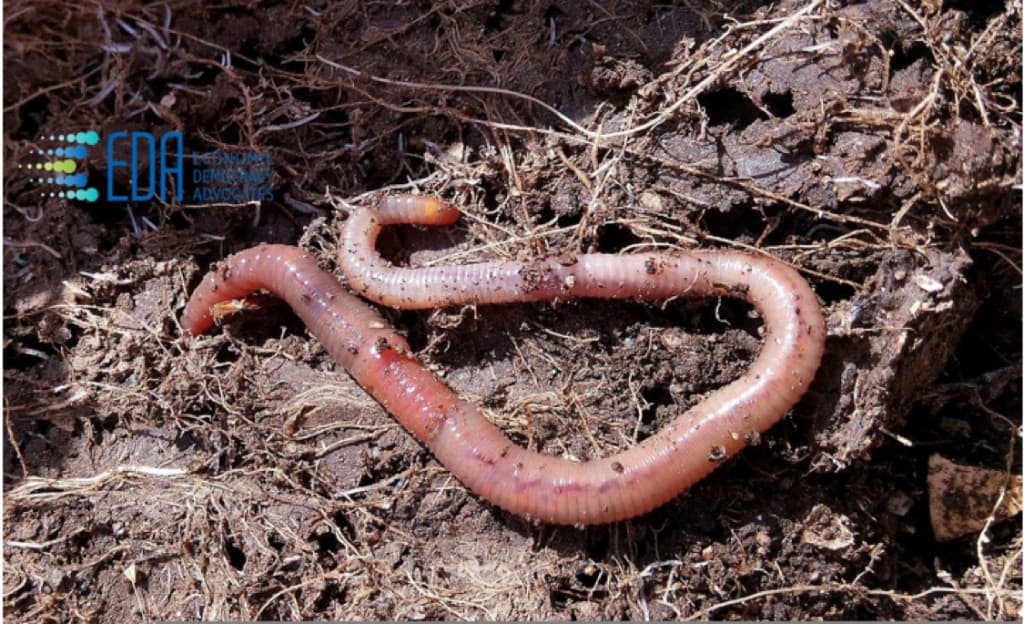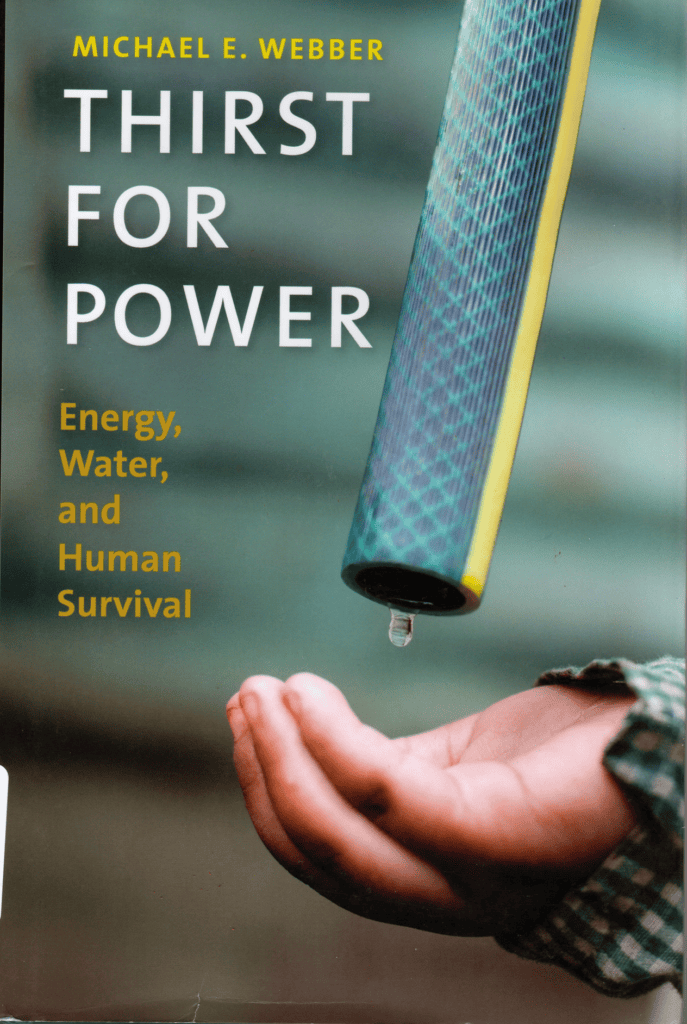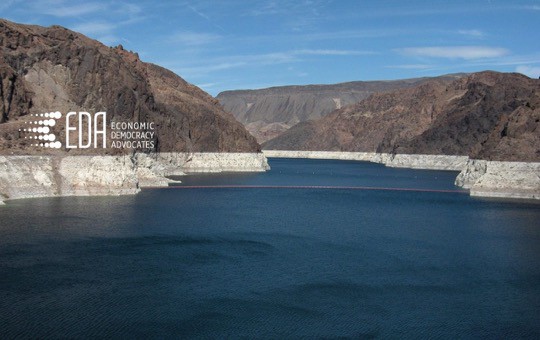Over the past week or so we’ve taken a glimpse at the world of wastewater recycling to acknowledge 2017’s theme for World Water Day. We looked at recycling efforts in Orange, CA, Singapore, and the pioneers of wastewater recycling in Namibia. While these recycling efforts were focusing on water for human consumption, there are needs for water in a variety of agricultural applications as well as industrial use, both of which can be less demanding.
This article offers the story of wastewater recycling that is managed by the lowly earthworm. It offers a view of wastewater recycling that is innovative, and is efficient. With this our last post in our series commemorating World Water Day on March 22, we want to leave you with an understanding that the proverb “necessity is the mother of invention” is one that leaves us with hope. We all should focus on our gifts of creativity to help with the sustainability of the planet.
Water, as we all know, is a terrible thing to waste. But for businesses that go through a lot of water—dairy farmers, wineries and sewage plants—vast quantities of wastewater is an unfortunate byproduct.
But since 1995, Chilean company BioFiltro has recycled more than 28 billion gallons of water to date with this humble organism: the worm.

Red worms remove up to 99 percent of wastewater contaminants in four hours in the BIDA System.
The worm’s invaluable contribution to crop health goes all the way back to Charles Darwin, who detailed their digestive capabilities in his 1881 book, The Formation of Vegetable Mould Through The Action of Worms.
BioFiltro’s BIDA System is a closed-loop biological wastewater treatment system. The worm-and-bacteria powered process can remove up to 99 percent of Biological Oxygen Demand (BOD) and Total Suspended Solids (TSS) and 70-90 percent removal of nitrogen, oil and grease in four hours, according to BioFiltro’s regional manager Mai Ann Healy.
Healy told EcoWatch that “most other treatment systems require days, if not weeks, to achieve these results.”
BioFiltro currently has 129 facilities installed in six countries. They process the wastewater from the Chilean Air Force Base on Antarctica as well as the Atacama Desert, which is the driest desert in the world. The company is currently constructing plants in California to serve the needs of food processors, wineries, waste haulers and sanitary waste, Healy said.

The BioFiltro plant in Torres del Paine National Park in Patagonia, Chile.
Recently, the company teamed up with Fetzer Vineyards to become the first winery the U.S. to use the system to process 100 percent of its wastewater. The Mendocino, California-based winery will use “billions” of earthworms to process its winery wastewater during the 2016 harvest season, a press release states. In doing so, Fetzer will accrue energy savings up to 85 percent over current wastewater treatment technologies.
Healy took the time to answer a few of EcoWatch’s questions via email.
EcoWatch: What makes worms so good at filtering wastewater?
Healy: Worms in and of themselves are not great at filtering wastewater. Rather, worms target the solids (or TSS) and break this waste down in their stomachs. Their excrement (worm castings) are rich in microbial activity.
This bacteria is aerobic, or needs air to function, and the burrowing earthworms create air channels throughout our system thereby bringing air to these tiny soldiers and creating an optimum living environment. This symbiotic relationship between worms and bacteria is what powers our systems, as the bacteria target the BOD of wastewater, the worms target the TSS and nitrogen.
Ultimately, our BIDA System converts wastewater into a reusable asset and contaminants into nutritious fertilizer onsite.
EcoWatch: Can I drink worm-filtered water?
Healy: You cannot drink the water that comes straight out of our system. In the wastewater world, the term is primary, secondary and tertiary filtration. Our systems as a stand-alone provide secondary filtration. Water from secondary filtration can be reutilized for select agricultural purposes but not human consumption. Water for human consumption must have tertiary filtration which is a disinfection process.
EcoWatch: Who started the company and why?
Healy: The first commercial scale plant was installed in 1995 by our chief technology officer, Alex Villagra. He first started studying the ability of worms to digest waste and wastewater while he was studying at the University of Chile and accredits his continued interest to the fact that “oftentimes the answers to the world’s most complex problems are right in front of us—products of billions of years of research and development, mother nature shows us, through her natural processes and designs, that she does know best.”
Villagra spent many years going through iterations of design, bacteria and worms. In 2010, Villagra teamed up with Matias Sjogren and Rafael Concha, all three of whom are engineers, to form what is now BioFiltro. The mission was to scale and globalize this revolutionary approach as all three are inspired to show the world how natural processes are capable of not only treating wastewater in a more efficient way, but also procuring a safer environment for future generations.
EcoWatch: Why are earthworms/microbes ideal for winery wastewater?
Healy: Winery wastewater is rich in sugars—worms and bacteria love sugar. The amount of worms present in our system is related to the wastewater quality—facilities that discharge water high in sugars, proteins, and fats (so wineries, milk/cheese/ice cream plants, slaughterhouses) have a very dense worm population.
EcoWatch: Are there really billions of worms in Fetzer’s system?
Healy: We have some systems that achieve worm densities of 12,000 worms per cubic yard and that’s not counting all the microscopic biology present. Fetzer’s system will have billions of worms and bacteria working tirelessly to reduce waste.
EcoWatch: How big or deep is the BIDA System? What does inside of it?
Healy: The layers are described here but essentially our BIDA System is an open-top structure, typically made out of concrete (concrete floor, 4 walls, open top). The layers, from bottom to top, are 1. drainage basins placed on the floor which create an air chamber; 2. geotextiles; 3. river cobble; 4. wood shavings. The size depends on how many gallons will be applied per day as well as the contaminant level—the dirtier the water, the larger our system.
When BioFiltro commissions a plant, we inoculate the wood shavings with a specific mix of worms and bacteria. Our systems are modular and scalable, so we can serve the needs of an individual household up to mega food processors. Our largest facility is a 2 million gallon per day food processor in Chile.
EcoWatch: What kind of maintenance does it require?
Healy: Our telemetry system is constantly monitoring various water quality parameters so that BioFiltro can ensure optimum system performance. Major maintenance tasks are executed by BioFiltro and consist of removing the worm castings. Over time, the top layer turns into castings (worm poop), which is a natural and highly nutritious fertilizer, and the castings must be harvested to keep the system aerobic. When we do this, we simply replenish with a layer of fresh wood shavings. Occasionally BioFiltro must also separate and remove worms from the system as they multiply exponentially.

BioFiltro’s treated wastewater can be reutilized for certain agricultural purposes.
EcoWatch: What makes the BIDA System unique? What are some of the advantages of using it?
Healy: It’s energy-efficient. We use up to 95 percent less energy than traditional wastewater technologies to deliver the same, if not better, quality effluent. Many dischargers could spend hundreds of thousands of dollars, if not millions, each year just to power the aerators used to clean their water. Fetzer, for example, is expecting to reduce its energy consumption by 1 million kWh each year as a result of implementing our system.
It’s natural. Our standalone BIDA System does not require the use of any chemicals. It’s also virtually odor-free as we process the wastewater within approximately four hours of being discharged from the client’s facility.
It’s sludge-free. Since our worms and bacteria digest everything there is no sludge, which is a typical byproduct of wastewater treatment. The only “byproduct” of our system is the nutritious castings which are actually a highly sought-after value-added product.
It’s simple to operate. We design our system with the client in mind and, thanks to our telemetry monitoring system, can provide a largely hands-off wastewater treatment solution. The client can therefore focus on their core business while our system runs automatically and mostly autonomously.
The BIDA System is a decentralized closed system. By offering a complete wastewater treatment system that is easy to operate, we empower rural clients and communities who otherwise would have no access to fresh water. For example, we have a site in Patagonia, in Torres del Paine National Park, which is inaccessible by car and needs to treat its water so that it does not pollute the beautiful landscape around it. There, we enable them to responsibly care for their site. In other communities, we empower those with limited access to recycle water for agricultural purposes.
EcoWatch: What are the goals of the company?
Healy: The goal is to prove that this natural process, a product built on 21 years of R&D, offers the best solution to wastewater technology. We have treated more than 28 billion gallons of wastewater. Our motivation is to implement water filtration systems that reduce dependency on freshwater sources while improving the environment in which our clients operate.
YOU MIGHT ALSO LIKE
Article by: Lorraine Chow
Originally published in EcoWatch.com


